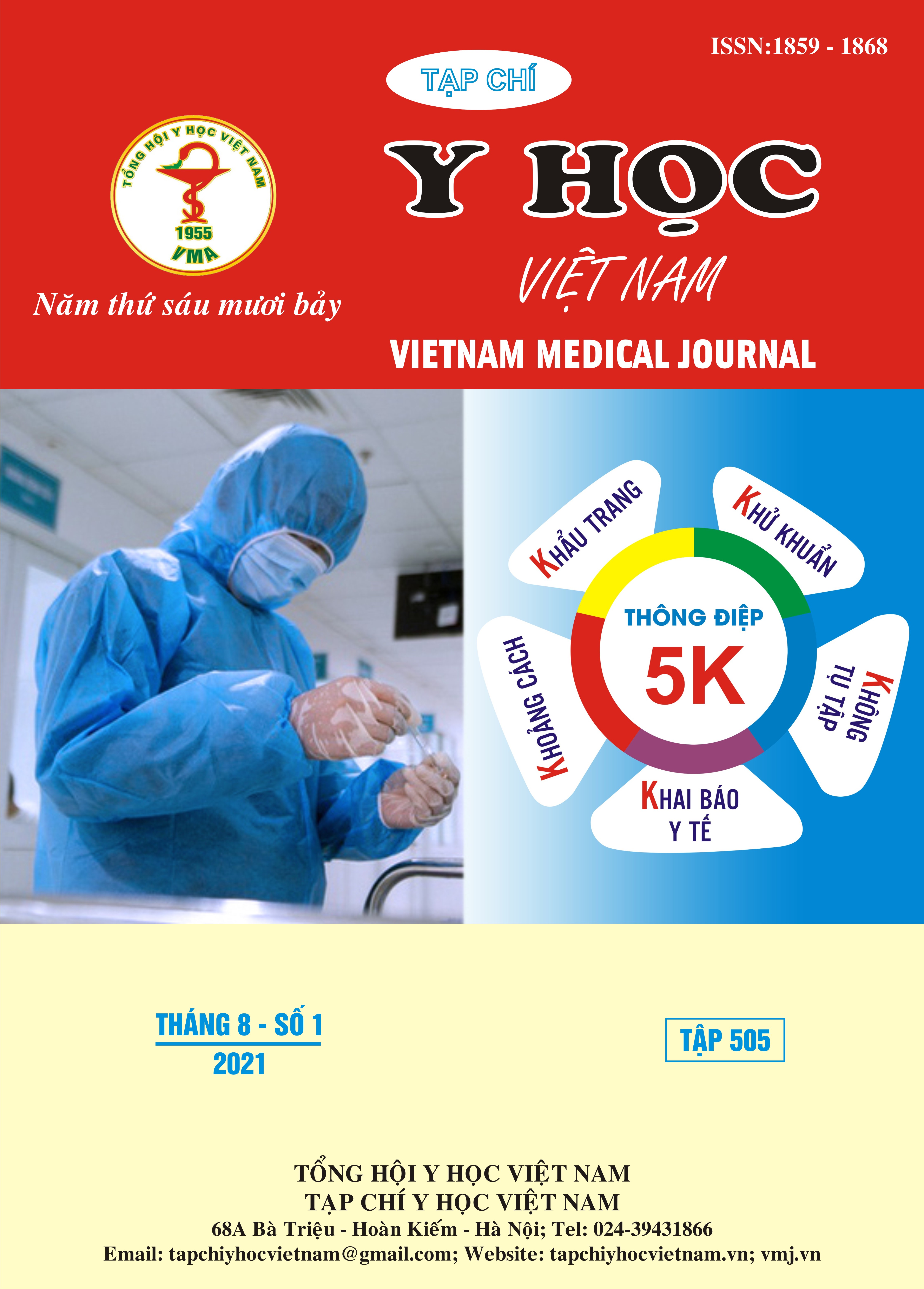ANXIETY LEVEL OF HEALTH WORKERS IN FRONLINE AND DESCRIBE FACTORS RELATED TO THE ANXIETY DURING THE COMPLICATED COVID-19 EPIDEMIC IN DA NANG CITY
Main Article Content
Abstract
Objective: To evaluate the anxiety level of health workers in fronline and describe factors related to the anxiety during the complicated COVID-19 epidemic in Da Nang city. Subjects and research methods: Health staff at frontline to prevent and control the COVID-19 epidemic, including 04 units: Da Nang Hospital, Lung Hospital, Hoa Vang District Medical Center, Centers for Disease Control. Criteria for selecting research subjects. Health staff at frontline units to prevent and control the COVID-19 epidemic at the time of the second wave of epidemic in Da Nang city; Over 18 years; No cognitive and behavioral disturbances; Agree to participate in the study. Criteria to exclude research subjects. Does not meet the criteria for selecting research subjects. Methods: A descriptive cross-sectional study was conducted from January 01 to May 30, 2021, on 602 health staff in fronline to prevent and control the COVID-19 epidemic in Da Nang city by direct interview. The questionaire use multiple choice questions and use the DASS21 scale (take out 07 questions to assess anxiety levels).
Level of anxiety
Score
Normal
0 – 7
Mild
8 – 9
Medium
10 – 14
Severe
15 – 19
Very severe
≥20
The DASS21 scale has been compiled by the National Institute of Mental Health and tested on a number of different occupational subjects. The DASS21 scale has been evaluated by many studies for its validity, reliability and affirmation that it can be applied in Vietnam, with no cultural differences. Results: In total 602 respondents completed the questionaire, the rate of anxiety disorders is very high (70.1%). The percentages of subjects with mild, moderate, severe and very severe anxiety disorders were 6.6%, 18.8% and 44.6% of the total subjects, respectively. Common anxiety states include: Feeling dry in your mouth, worrying about situations that might embarrass you, or breaking out in a sweat. There are 03 population and work factors related to the anxiety disorder manifestations of the research subjects, in which the population factors include: frontline anti-epidemic facilities (Anxiety expression in Da Nang Hospital) Nang higher than subjects working in other units (OR= 3,382; 95% CI: 1.832-6.243; p < 0.05); other factors from work related to anxiety expression include: had contact with a COVID-19 patient (OR= 0.361; 95% CI: 0.547-1.238; p<0.05), the total pressure score from the group of 07 work-related pressure factors was high (OR= 1.246; 95%CI: 1.159-1.342; p<0.05. Conclusions: The study showed that status of anxiety disorder of many health workers in fronline were affected by the COVID-19 epidemic outbreak at Da Nang. There should be many interventions to protect health workers in the coming time.
Article Details
Keywords
COVID-19, anxiety level, health worker in fronline, Da Nang
References
2. Holshue ML, DeBolt C, Lindquist S, Lofy KH, Wiesman J, Bruce H, et al. First case of 2019 novel coronavirus in the United States. N Engl J Med. 2020;382(10):929–36. https:// doi.org/ 10.1056/ NEJMoa2001191.
3. Dimitrios Giannis (2020), Impact of coronavirus disease 2019 on healthcare workers: beyond the risk of exposure, Postgraduate Medical Journal.
4. Thân Mạnh Hùng và cộng sự (2020), “Sức khỏe Tâm thần và Kết quả Chất lượng Cuộc sống Liên quan đến Sức khỏe của các Nhân viên Y tế Tuyến đầu trong Thời kỳ Đỉnh điểm bùng phát COVID-19 ở Việt Nam: Một nghiên cứu cắt ngang”. Risk Management And Healthcare Polyci 2020; 13:2927–2936.
5. Rafia Tasnim, Md. Saiful Islam (2020), “Prevalence and correlates of anxiety and depression in frontline healthcare workers treating people with COVID-19 in Bangladesh”. PsyArXiv, 23 Sept. 2020, pp. 4,5,10.
6. Ngọc Sao (2017), Thực trạng sức khỏe tâm thần và một số yếu tố liên quan của nhân viên khoa Hồi sức cấp cứu tại một số bệnh viện trên địa bàn Hà Nội năm 2017.
7. Nguyễn Thị Phương Lan và cộng sự, “Các yếu tố căng thẳng tâm lý,mối quan tâm và hỗ trợ sức khỏe tâm thần cho nhân viên chăm sóc sức khỏe ở Việt Nam trong thời gian bùng phát dịch bệnh Coronavirus 2019 (Covid 19)”. Public Health, 19 March 2021, pp. 2. https: //doi.org/ 10.3389/fpubh.2021.628341.


